Eber’s water towers 2019
The leading trade journal in Sweden, VA-tidskriften Cirkulation has since 1998 an article series under the heading Ebers vattentorn (Eber’s water towers), where Eber Ohlsson with text and photo presents interesting water towers in the world (except Scania and Sweden). Below is a free translation to English of these texts.
Eber’s water towers in Cirkulation 1/2019
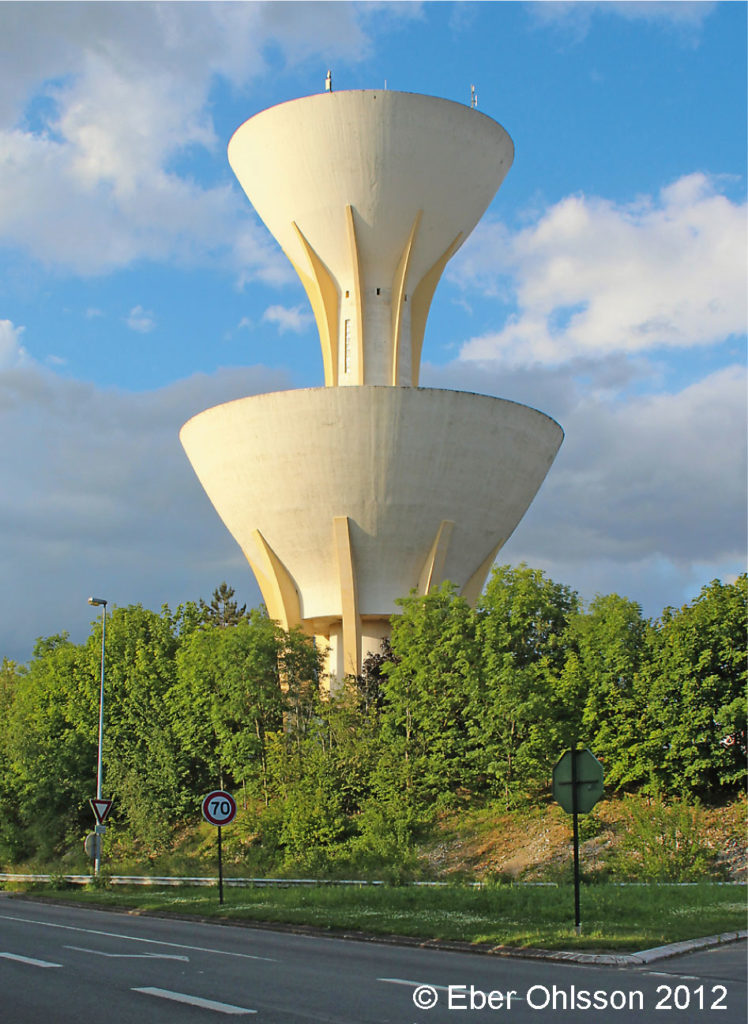
A free translation to English:
When you open your water tap, you want that the water shall have a good pressure, not too high and not too low. This may require a more complex water pipeline network, if it is in topography with high altitude variation. One common way to solve this is to create several pressure zones, and if there is a need for water towers, build several towers.
It does not prevent these water towers from being found in the same place, even if, like the suburb of the French city of Arras, Saint-Laurent-Blangy, they build the water tower on top of each other. More normal is to create reservoirs at different heights in the same water tower.
Published 2019-02-05
Eber’s water towers in Cirkulation 2/2019
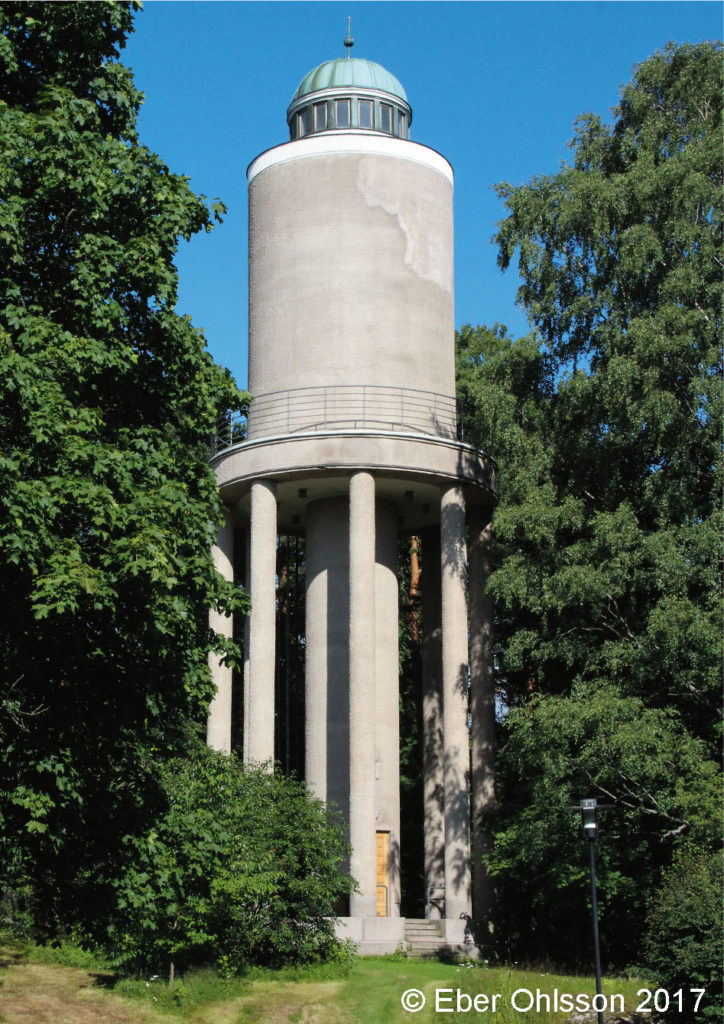
A free translation to English:
Water is a prerequisite for life, while its opposite does not necessarily is valid. Our culture of preserving the memory and the remains of those who are no longer in life has created rooms for this memory. Modern cemeteries in our culture sphere often have verdure, with lawns, flowers and trees.
Verdure needs water and then can a water tower be useful. Such a tower, probably drawn by architect Albert Nyberg, was built in the late 1930s at Malm’s cemetery in Helsinki, opened in 1894 and today Finland’s largest. It was the construction company Otto Vuorio who built the tower.
Published 2019-03-13
Eber’s water towers in Cirkulation 3/2019

A free translation to English:
Many of the 170 water towers that have been presented in Cirkulation until now have been towers that for some reason have been special. But all water towers do not get such attention; towers that every day, year after year do their work for the benefit of us thirsty souls. They do not take such a large place, but raise above the crowd.
Such a water tower is in the small town of Tillar, Arkansas, in the United States. For some reason, the last letter has dropped off from the tower, so that there now stand Tilla, which may look like a thought. A water tower, that perhaps have stand there for 55 years, a tower that one should congratulate every day.
Published 2019-04-17
Eber’s water towers in Cirkulation 4/2019
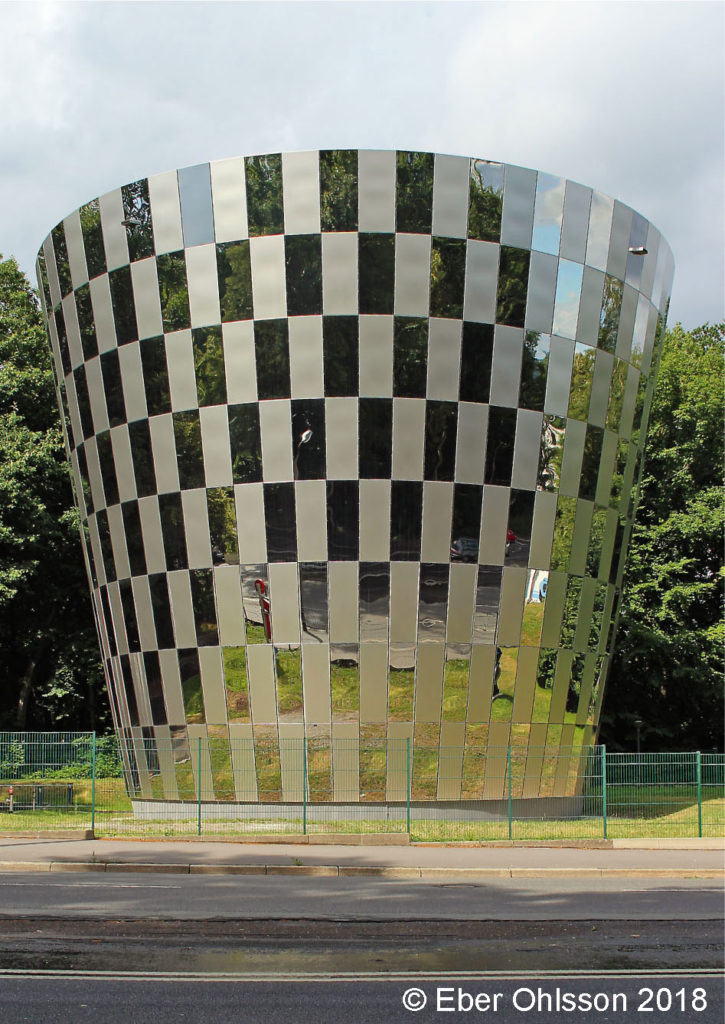
A free translation to English:
To be mirrored itself in a water tower is not possible on so many towers, but something that is possible on the new water tower in the German city of Chemnitz in Saxony. On the 1 350 m² large facade, the artist Peter Apfel has with 400 pieces of 2.5 meter high stainless steel plates in two silver gray shades, matt and reflective, made this possible.
The Chemnitz tower has first been built as a 22 meter high cone in reinforced concrete and has subsequently been covered with stainless steel plates to get a varied facade. The total construction cost was EUR 4.6 million, including government grants, where the extra facade cost EUR 400,000.
Published 2019-06-04
Eber’s water towers in Cirkulation 5/2019
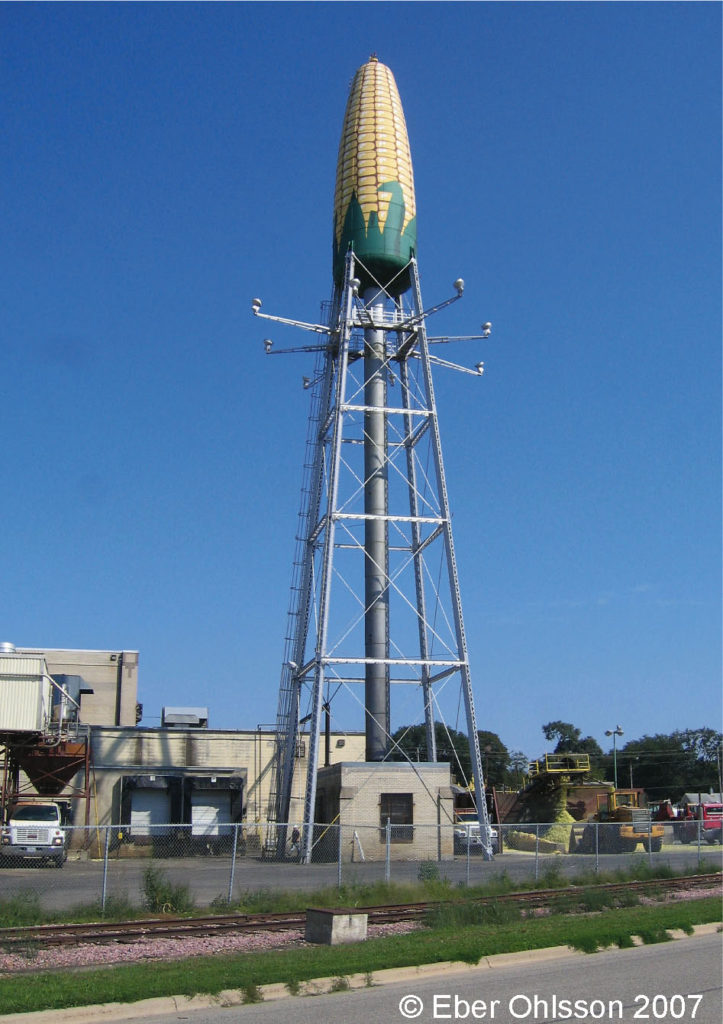
A free translation to English:
Corn is a water- and heat-intensive crop, especially in the early growth stage, and is grasses that can grow up to 6 m high. The production of the crop is big in the USA and especially in the central Midwest. Here in the city of Rochester in southern Minnesota stands a water tower shaped and painted like a corncob, which is the female flower of the plant.
The 46-meter high water tower, where the corncob is 18 m, built in 1931 and holds 190 m³. The tower is owned by the food industry, Seneca Foods, and trucks tipping its load of corn cobs adjacent to the water tower. It seems that even the harvested corn requires a lot of water.
Published 2019-08-28
Eber’s water towers in Cirkulation 6/2019
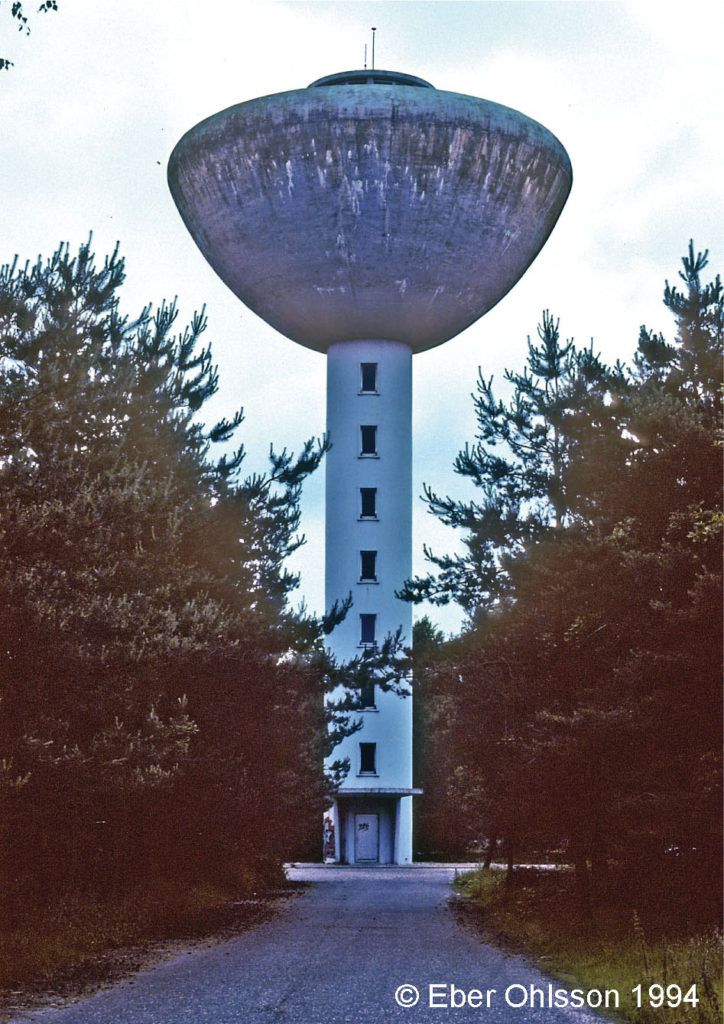
A free translation to English:
In a small stretch of woodland at Berendrecht, one kilometer east of the Scheldt River and north of Antwerp in Belgium and only a few meters from the border with the Netherlands, stood between 1968 and 2003, a modern spherical shaped water tower in concrete. It was 34 meters high and 20 meters in overall width of the reservoir.
The water tower was blown up in 2003 and this because the concrete in the tower had serious injuries caused by carbonation, which can occur when carbon dioxide from the air reacts with the calcium hydroxide in the hardened concrete, which lowers the pH and can get reinforcement to corrode. Everything does not last forever.
Published 2019-10-02
Eber’s water towers in Cirkulation 7/2019

A free translation to English:
A brick expressionist water tower with antique architectural elements stands in the German capital’s district of Steglitz. With the start of construction in 1916 of the then independent Steglitz followed many difficulties, where the First World War and its economic consequences, not least lack of pipes done that the tower first 1928 could be in operation with its 2 000 m³.
The tower became damaged during World War II, but was able after a repair in 1950 to be in operation until 1962. It became a listed building in 1992, and after a renovation in 2000, is it now in the tower, which stands at Steglitz cemetery, office for a medical publishing company.
Published 2019-11-06
Eber’s water towers in Cirkulation 8/2019
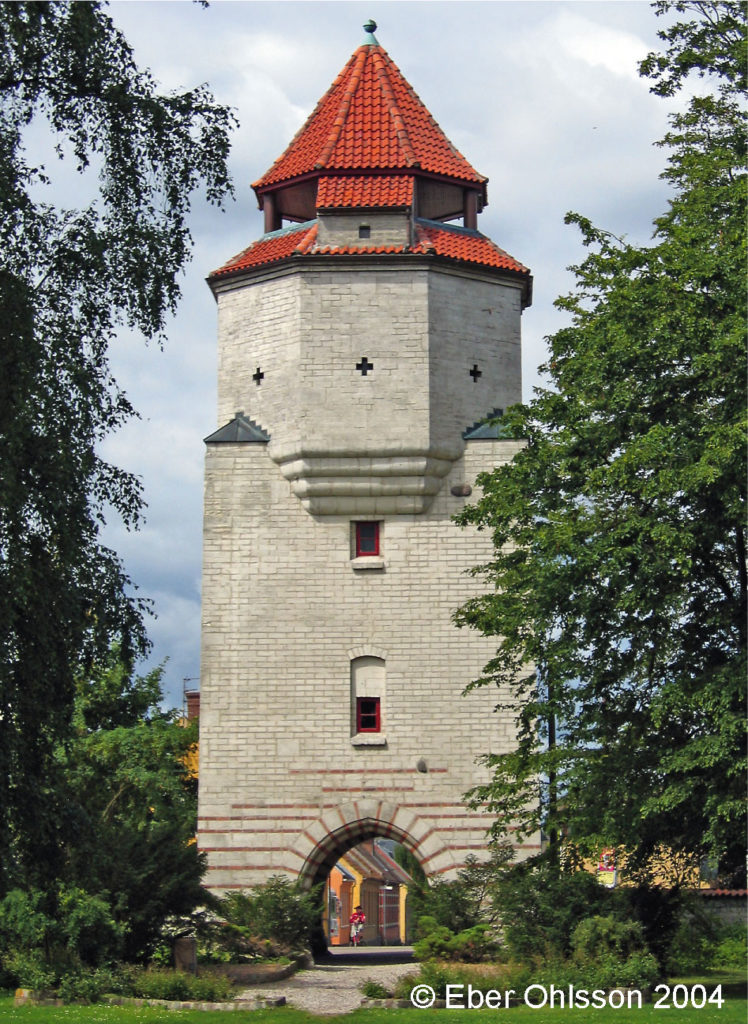
A free translation to English:
Medieval city walls confined, protected and marked their cities, but there were even gate towers at strategic places for entry and exit. In later centuries, much of it was demolished when the cities expanded. Gate towers, however, in some cases has returned, when architects have attempted to shape it so that the new water tower fit in an older urban form.
In Store Heddinge on Zealand in Denmark, the architect GB Hagen designed an 18 m high water tower as a gate tower. It was built in 1911 with chalk from the nearby Stevns Klint and has hints of red bricks and a coat of arms on the facade.
Published 2019-12-11
